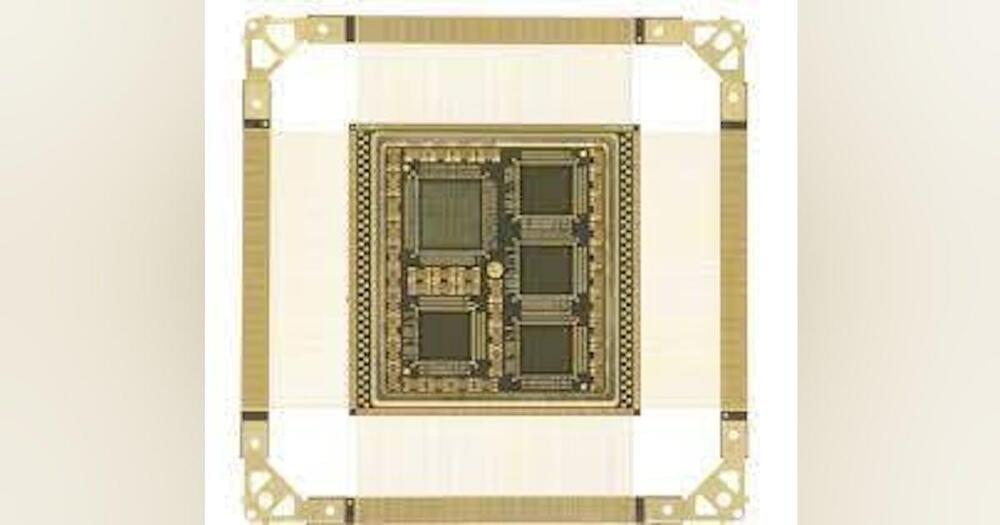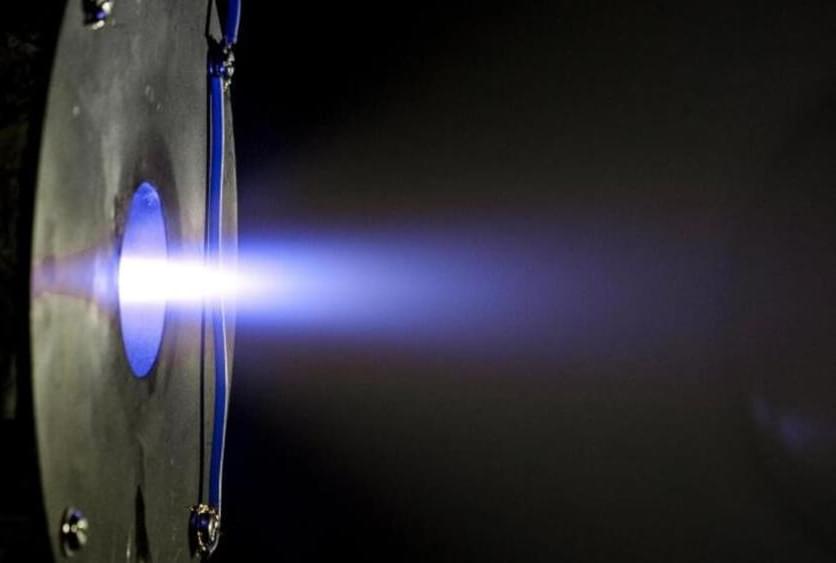The mission aims to investigate whether Jupiter’s three moons – Callisto, Europa and Ganymede – can support life in its oceans.



The services are necessary to maintain a domestic trusted source for strategic radiation-hardened microelectronics to meet the U.S. Department of Defense (DOD) certification to Congress, as stipulated by the fiscal 2018 National Defense Authorization Act Section 1,670, DOD officials say.
Radiation-hardened microelectronics components are necessary for manned and unmanned spacecraft operating on long-duration orbital missions in high-radiation space environments like geosynchronous orbits.

A blockchain entrepreneur, a cinematographer, a polar adventurer and a robotics researcher plan to fly around Earth’s poles aboard a SpaceX Crew Dragon capsule by end of year, becoming the first humans to observe the ice caps and extreme polar environments from orbit, SpaceX announced Monday.
The historic flight, launched from the Kennedy Space Center in Florida, will be commanded by Chun Wang, a wealthy bitcoin pioneer who founded f2pool and stakefish, “which are among the largest Bitcoin mining pools and Ethereum staking providers,” the crew’s website says.
“Wang aims to use the mission to highlight the crew’s explorational spirit, bring a sense of wonder and curiosity to the larger public and highlight how technology can help push the boundaries of exploration of Earth and through the mission’s research,” SpaceX said on its web site.

SpaceX is working towards the goal of landing both the super heavy booster and Starship on a drone ship in the ocean, which has the potential to revolutionize space travel and support their mission for greater sustainability and reusability Questions to inspire discussion What is SpaceX’s goal for landing the super heavy booster and Starship?

Single-photon detectors built from superconducting nanowires have become a vital tool for quantum information processing, while their superior speed and sensitivity have made them an appealing option for low-light imaging applications such as space exploration and biophotonics. However, it has proved difficult to build high-resolution cameras from these devices because the cryogenically cooled detectors must be connected to readout electronics operating at room temperature. Now a research team led by Karl Berggren at the Massachusetts Institute of Technology has demonstrated a superconducting electronics platform that can process the single-photon signals at ultracold temperatures, providing a scalable pathway for building megapixel imaging arrays [1].
The key problem with designing high-resolution cameras based on these superconducting detectors is that each of the sensors requires a dedicated readout wire to record the single-photon signals, which adds complexity and heat load to the cryogenic system. Researchers have explored various multiplexing techniques to reduce the number of connections to individual detectors, yielding imaging arrays in the kilopixel range, but further scaling will likely require a signal-processing solution that can operate at ultralow temperatures.
Berggren and his collaborators believe that the answer lies in devices called nanocryotrons (nTrons), which are three-terminal structures made from superconducting nanowires, just like the single-photon detectors are. Although nTrons do not deliver the same speed and power of superconducting electronics based on Josephson junctions, the researchers argue that these shortcomings are not a critical problem in photon-sensing applications, where the detectors are similarly limited in speed and power. The nTrons also offer several advantages over Josephson junctions: they operate over a wider range of cryogenic temperatures, they don’t require magnetic shielding, and they exploit the same fabrication process as that used for the detectors, allowing for easy on-chip integration.
The Cygnus spacecraft is filled with nearly 8,200 pounds of supplies, hardware and other critical materials for dozens of scientific and research experiments, according to NASA.
That includes tests for water recovery technology and supplies needed for a process to produce blood and immune stem cells in microgravity. Also included in the payload are materials to study the effects of spaceflight on engineered liver tissue and microorganism DNA, NASA said.
While AI has the potential to automate many tasks, there are certain jobs that require human skills and abilities that AI cannot replicate. These include jobs that require creativity, empathy, critical thinking, and human interaction. According to the World Economic Forum, AI is unlikely to be able to replace jobs requiring human skills such as judgement, creativity, physical dexterity and emotional intelligence. Some examples of jobs that AI cannot replace include psychologists, caregivers, most engineers, human resource managers, marketing strategists, and lawyers. In this video, Dr. Michio Kaku mentioned three specific types of jobs that AI cannot replace: blue-collar jobs that are not repetitive, emotional jobs, and jobs requiring imagination. These types of jobs require human skills and abilities that are difficult for AI to replicate. For example, blue-collar jobs that are not repetitive often require physical dexterity and mobility. Emotional jobs require empathy and the ability to connect with others on a personal level. Jobs requiring imagination involve creativity and innovation. In conclusion, while AI has the potential to automate many tasks and change the job landscape, there are certain jobs that require human skills and abilities that AI cannot replicate. These include blue-collar jobs that are not repetitive, emotional jobs, and jobs requiring imagination. It is important for individuals to develop these skills in order to thrive in the future job market. Fair Use Disclaimer : Copyright disclaimer under section 107 of the Copyright Act 1976, allowance is made for “fair use” for purposes such as criticism, commenting, news reporting, teaching, scholarship and research. Fair use is a use permitted by copyright statute that might otherwise be infringing. Non-profit, educational or personal use tips the balance in favor of fair use. Disclaimer: The video and audio content used in this video is for educational purposes only and does not belong to me. I have given credit to the respective owners and creators of the content. This video is intended to provide information and knowledge to its viewers, and no copyright infringement is intended. I have made every effort to ensure that the content used in this video is properly credited and used in accordance with fair use guidelines. If you are the owner of any content used in this video and have any concerns, please contact me. Legal Disclaimer : The video clips incorporated into this project are the sole property of their respective owners and creators. I do not claim ownership or rights to any of the content used. All credit is attributed to the original sources. No copyright infringement is intended. Clips Provided by Cuckoo for Kaku Watch : https://youtu.be/JANGUKLJkPQ #shorts #shortsfeed #shortvideos #shortvideo #shortsvideo #shortsyoutube #shortsviral #viralshortsvideo #viralshorts #viral #viralvideo #viralvideos #space #spaceflightsimulator #deepspace #spaceship #spacelovers #spacesuit #spaceexploration #spacecraft #telescope #spacex #spacestation #universe #cosmos #nasa #viral #viralvideo #viralvideos #science #technology #physics #astronomy #astrophysics #astrophotography #cosmology #cosmos #jwst #jameswebbspacetelescope #jameswebb #hubble #hubbletelescope #video #videos #interstellar

Video of when SpaceX landed an orbital class rocket for the 200th time! Credit: Space.com | footage courtesy: SpaceX | edited by Steve Spaleta Music: The Launch by Jon Bjork / courtesy of Epidemic Sound.
